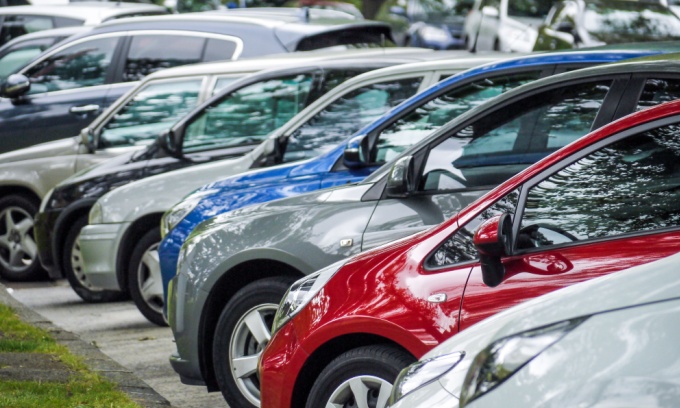KEY POINTS
- A multi-car insurance or multi-vehicle car insurance policy insures two or more vehicles under the one policy.
- Not a lot of providers offer or even mention multi-car insurance policies.
- There are other ways you may be able to get a discount on your car insurance.
What is a multi-vehicle car insurance policy?
Multi-vehicle or multi-car insurance policies insure two or more vehicles under the one policy. Each vehicle is typically treated separately, based on factors such as their make and model, who owns and drives the vehicle and the level of cover taken out and excess amount for the policy. As there is only one policy, there is also only one bill. This may help to reduce paperwork, as well as the time spent keeping track of car insurance policies for multiple cars. It may also be cheaper (but not always) than taking out a separate policy for each vehicle.
The challenge, though, is finding a multi-vehicle car insurance policy. Not a lot of providers offer or even mention multi-car insurance policies. For example, insurance provider Budget Direct strictly states that it “does not offer multi-vehicle car insurance”. But there are some providers that do offer multi-vehicle car insurance policies, so you might have to shop around to find a deal that suits your needs and budget.
If you’re unable to find a multi-vehicle car insurance policy that’s right for you, there might be other ways you can reduce your premiums.
Compare car insurance policies
If you’re comparing car insurance policies, the comparison table below displays some of the policies currently available on Canstar for a 30-39 year old male seeking comprehensive cover in NSW without cover for an extra driver under 25. Please note the table is sorted by Canstar Star Rating (highest to lowest) followed by provider name (alphabetical) and features links direct to the providers’ websites. Consider the Product Disclosure Statement (PDS) and Target Market Determination (TMD), before making a purchase decision. Contact the product issuer directly for a copy of the PDS and TMD. Use Canstar’s car insurance comparison selector to view a wider range of policies. Canstar may earn a fee for referrals
- Save 15%^ on your first year’s premium when you purchase a new Car Insurance policy online.
- 24/7 Phone & Online Claims.
- Budget Direct - Insurance Solved.
- Insurance that's a bit more you-shaped.
- Canstar’s 2025 Most Satisfied Customer Car Insurance – NSW, VIC, SA
- Lodge a Claim 24/7 with our Advisors
- Collect 10,000 Flybuys Points with a new Comprehensive Car Insurance Policy for Flybuys members. Ends 30/1/26. T&Cs, Excl Apply.
- Earn up to 40,000 Qantas Points with every car insurance policy. Ends 28 Jan. Plus save 15% on your 1st year’s premium when you purchase online. T&Cs apply.
- Boxing Day Sale: Complimentary Roadside Assistance for 12 months. Choose your own repairer. Up to 10% off your first year's premiums. $10 monthly kogan.com credit
Who is eligible for a multi-vehicle car insurance policy?
Generally speaking, anyone who lives in a household with more than one vehicle can apply for a multi-vehicle car insurance policy with a provider that offers such a deal. This is the case even if the vehicles don’t belong to the same person. In most cases, the owners of the cars only need to live at the same address to qualify.
You may be interested in applying for a multi-vehicle car insurance policy if you fit into any of the following scenarios:
- A single person with more than one vehicle.
- A couple with more than one vehicle.
- Friends, siblings and relatives who live together and have more than one vehicle between them.
- Families (single-parent and partnered) with children who are old enough to drive and who own their own vehicles.
The eligibility requirements will vary depending on your circumstances and the provider and policy you choose, so it’s important to read the policy’s Product Disclosure Statement (PDS) or check with your provider directly. When searching for a policy, even if a provider doesn’t mention any multi-vehicle policy on its website, it’s still worth asking if such an option is available.
If you own a number of vehicles for your business or company, there are other insurance options that may better suit your needs, like business or commercial car insurance. Some of these policies may also cover an entire business’ fleet of vehicles.
What are the pros and cons of multi-vehicle car insurance policies?
The possible benefits of having a multi-vehicle car insurance policy include the potential convenience and savings it may offer. You may find bundling all your household’s vehicles into a single policy from the same provider simplifies the process, as there’s just one set of paperwork and one payment that needs to be made, as opposed to keeping track of multiple car insurance policies. You may also be able to negotiate a discount. For example, the classic car insurer Shannons offers a multi-vehicle discount if you insure your special car and your daily drive vehicle.
However, there are some potential disadvantages of having a multi-car insurance policy. Each car listed on a multi-car insurance policy will likely be treated separately, as are the risks associated with insuring it from the insurer’s perspective. If the policy covers multiple drivers you’ll need to work out how much each person listed on a policy will need to pay towards any premiums, and the age of any of the drivers could also be an issue. The youngest driver will generally be more expensive and will influence the overall premium paid for the multi-car policy. Also if you need to remove vehicles from the policy, it could remove the discount and affect the premium.
Before signing up for any multi-car insurance policy you might want to consider whether you would be better off excluding certain people, or taking out separate policies for each driver and their car.
Compare Comprehensive Car Insurance for under 25s
You should also carefully read the Product Disclosure Statement (PDS) and Target Market Determination (TMD), as well as other relevant policy documentation, to see if the insurance policy is suitably for all your needs.
How many cars can you add to a multi-car policy?
This will ultimately depend on the insurance provider, so it’s best to check to see what their terms and conditions allow for.
What other car insurance discounts are available?
There are other ways you may be able to get a discount on your car insurance:
- Online discounts: A number of providers on Canstar’s database offer a discount if you buy your policy online rather than in person. This may be a dollar amount or a percentage discount. This usually applies to the first year’s premium only, but may be ongoing.
- Named Driver discounts: Some providers offer a discount if you name each of the drivers of a certain vehicle under the one policy. It’s important to note that listing young or inexperienced drivers, such as provisional licence holders (P-platers), may lead to an increase in your premium.
- Multi-policy discounts: This discount may apply if you take out two or more separate kinds of insurance policies with one provider. For example, if you took out car insurance and home insurance. It’s important to check whether you could get a better deal and/or coverage by taking out separate policies with different insurance providers.
- No claims discounts: This is where a provider gives you a discount if you don’t claim on your insurance over a set period of time. The discount typically increases each subsequent year you don’t make a claim (up to a certain limit).
- Discounts for securing your vehicle: If you park your car in a secure garage when not in use, you may reduce your car insurance premiums. This is due to insurers considering your vehicle less likely to be stolen or damaged, as opposed to if it was parked overnight on the street.
- Discounts for driving less: Although this isn’t feasible for everyone, a driver who uses their vehicle less may be eligible for reduced premiums through a ‘pay as you drive’ car insurance policy.
Check out our tips to save money on your car insurance for more ideas. It can be a good idea to get multiple car insurance quotes and compare your options on a regular basis to see if you could get a better deal, even with your existing provider. You can also compare comprehensive car insurance by using Canstar’s comparison tables.
Cover image source: doublelee/Shutterstock.com








